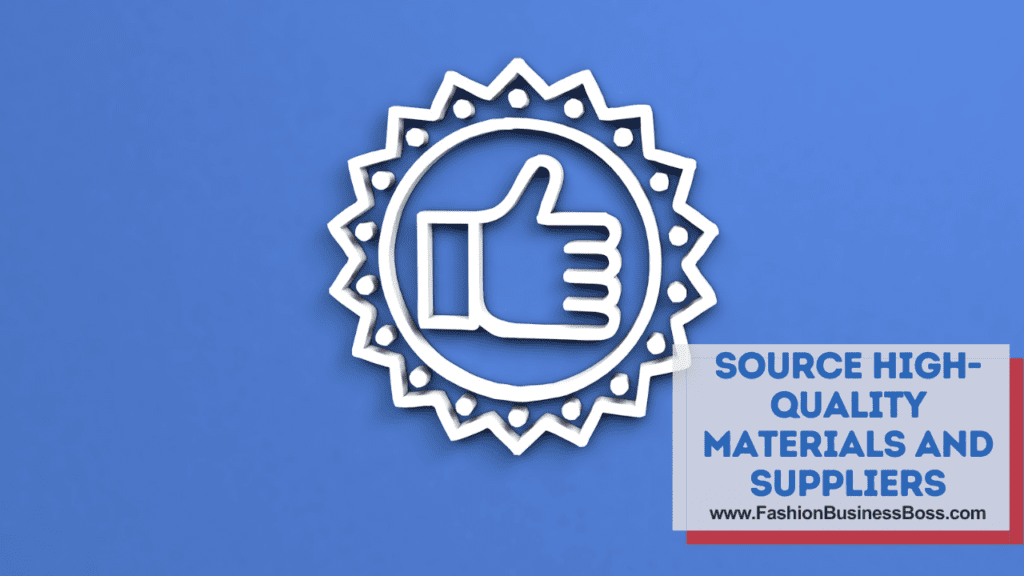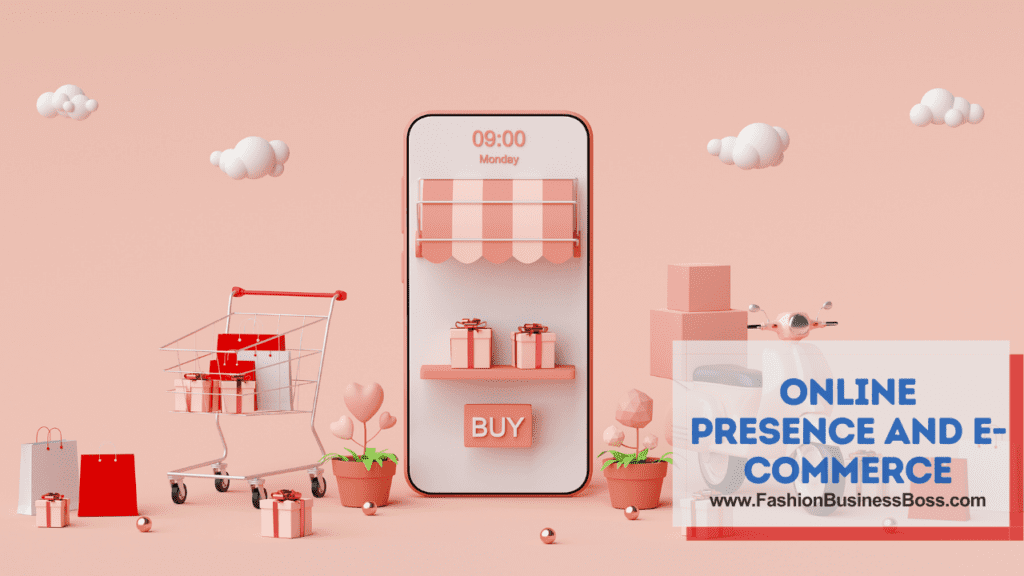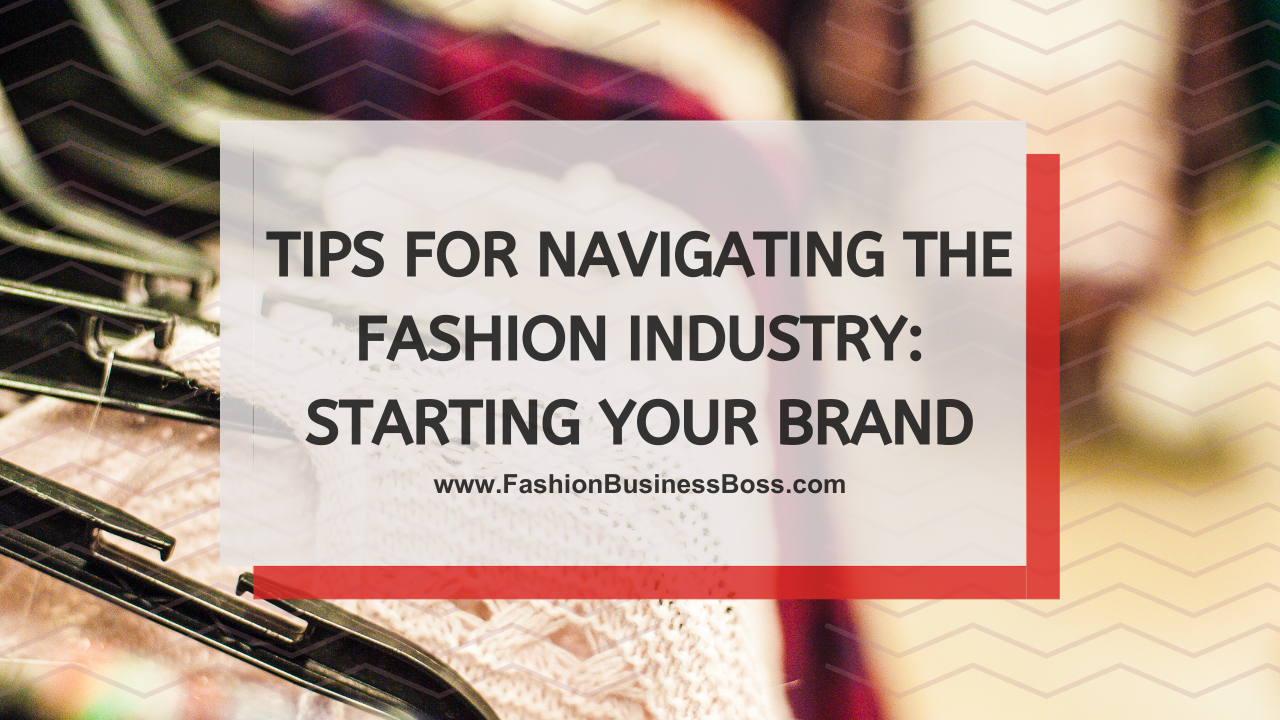Launching your own clothing brand is a creative and entrepreneurial endeavor that allows you to express your unique style and vision while catering to the fashion needs of others. Whether you’re passionate about streetwear, eco-friendly fashion, or high-end couture, the fashion industry offers ample opportunities for innovation and growth.
Here are some essential tips for starting a clothing brand: Define your unique style, conduct thorough market research, source quality materials, and build a strong online presence. Passion and persistence are your allies on this fashionable journey.
In this article, we’ll explore essential tips and strategies to help you kickstart your clothing brand and make it a thriving business.
Define Your Brand Identity

Defining your brand identity is the crucial starting point when embarking on the journey of launching a clothing brand. Begin by addressing several fundamental questions. Firstly, consider the type of clothing your brand will specialize in. Will it focus on casual wear, sportswear, formal attire, or something entirely unique? Next, define your brand’s unique style and aesthetic. This involves determining the color palettes, design elements, and the overall look and feel that will set your clothing apart.
Understanding your target audience is another critical aspect. It entails recognizing the demographics, age groups, genders, lifestyles, and preferences of the individuals you aim to reach with your clothing. Take a close look at what sets your brand apart from competitors. Whether it’s your innovative designs, commitment to sustainability, competitive pricing, or other distinctive features, these factors define your brand’s uniqueness.
Your brand identity should serve as a reflection of your values, vision, and the narrative you wish to convey through your clothing. It forms the foundation upon which your brand is constructed, ensuring a clear and consistent message that resonates with your intended customers. By taking the time to thoughtfully define your brand identity, you lay a solid groundwork for your clothing brand, making it more relatable and appealing to your target audience.
Read more about: Starting Your Fashion Empire: What It Costs
Market Research and Analysis
Market research and analysis play a pivotal role in the early stages of starting your clothing brand. Rather than immediately jumping into production, it’s wise to take the time to conduct comprehensive market research.
Begin by closely examining the preferences of your intended audience. This involves understanding what styles, designs, and clothing types resonate with them. It’s essential to delve into competitor analysis. Study other clothing brands operating in a similar space to identify their strengths, weaknesses, and what sets them apart. This step will help you position your brand more effectively.
Market research also extends to recognizing prevailing trends within the fashion industry. By staying informed about what’s currently popular, you can align your clothing offerings accordingly.
Create a Business Plan
Crafting a well-structured business plan is a fundamental step when embarking on the journey of establishing your clothing brand. This plan serves as your comprehensive guide, ensuring you have a clear roadmap for your venture.
In your business plan, there are several critical components to consider. Firstly, you should outline your budget and financial projections. This involves calculating the costs involved in various aspects of your clothing brand, from production to marketing, and projecting your revenue.
Marketing and sales strategies form another vital part of your plan. Describe how you intend to reach your target audience, promote your clothing, and ultimately make sales. It’s essential to think strategically about how you’ll attract and retain customers.
Production and sourcing plans are crucial too. Detail how you will manufacture your clothing, where you will source materials, and how you will manage your supply chain.
Your business plan should encompass legal and regulatory considerations, ensuring that you comply with all necessary laws and regulations. Also, don’t forget to include branding and promotion strategies that highlight how you’ll build brand awareness and promote your clothing.
Source High-Quality Materials and Suppliers

The quality of the clothing you produce is of utmost importance. To ensure the excellence of your garments, it is vital to establish robust relationships with dependable suppliers and manufacturers who are equally devoted to maintaining high standards.
Reliability and trustworthiness in your supply chain are key factors. Seek out suppliers and manufacturers who consistently provide materials and production services that meet your quality criteria. This may involve researching and vetting potential partners to ensure their reliability.
If your brand places importance on sustainability and ethical practices, it’s essential to verify that your materials are sourced in an environmentally responsible and ethical manner. This may include using sustainable fabrics, practicing fair labor standards, and reducing the environmental footprint of your production processes.
Read more about: Starting Your Journey: How to Open a Clothing Store
Design Your Collection
Design serves as the core of your clothing brand, shaping its identity and defining its appeal. To begin, focus on crafting a collection that seamlessly embodies your brand’s unique essence.
A cohesive collection is one in which all the pieces harmonize with each other, creating a unified brand image. When designing, remember to consider factors such as seasonality, versatility, and prevailing fashion trends. These aspects play a role in determining what types of clothing will be in demand during different times of the year and what styles will resonate with your target audience.
While staying attuned to trends is essential, it’s equally crucial to maintain your brand’s distinct style and aesthetic. This ensures that your collection remains true to your vision and resonates with your intended customers.
Branding and Logo Design
A brand’s logo is its visual symbol, representing the essence and message of the brand. When it comes to branding and logo design for your clothing brand, it’s crucial to make a thoughtful investment.
Your brand’s logo serves as a key element in creating a memorable and recognizable identity. To achieve this, consider enlisting the services of professional designers who can translate your brand’s core values and personality into a visually appealing logo.
Investing in professional branding and logo design ensures that your logo effectively communicates your brand’s identity to your target audience. It should encapsulate the style, tone, and purpose of your clothing brand, making it easily recognizable and resonant with your customers.
Remember, your logo is often the first impression your brand makes on potential customers. It plays a vital role in creating brand awareness and attracting consumers. By prioritizing professional logo design and branding, you lay a strong foundation for your clothing brand, helping it stand out in a competitive market and fostering a strong and lasting connection with your audience.
Online Presence and E-Commerce

In the contemporary digital landscape, cultivating a robust online presence is a prerequisite for your clothing brand’s visibility and growth. To achieve this, consider the following steps:
First and foremost, invest in the creation of a compelling website. This website should not only showcase your clothing line but also facilitate e-commerce transactions. It’s imperative that the site is user-friendly, visually appealing, and offers a seamless shopping experience to your customers.
Leverage the power of social media platforms. Establish a presence on platforms like Instagram, Facebook, Twitter, and Pinterest. Utilize these channels to share your clothing designs, provide brand updates, and actively engage with your followers. Consistent and authentic interaction can foster the development of a loyal customer base.
To keep your audience engaged, regularly share captivating content. This could involve offering glimpses behind the scenes of your design process, providing style tips, and featuring customer testimonials. Utilizing high-quality imagery and effective storytelling is key to attracting and retaining followers.
Consider incorporating online marketing strategies into your plan, such as paid advertising on social media platforms and search engines. These efforts can significantly increase your brand’s visibility, driving more traffic to your website.
Read more about: Step into Style: Launch Your Clothing Boutique
Marketing and Promotion
Effective marketing and promotion are essential for creating awareness of your clothing brand. To achieve this, employ a variety of strategies across both online and offline channels.
Online marketing, for instance, includes social media advertising, where you can run targeted ad campaigns on platforms like Facebook and Instagram. This allows you to reach a specific audience likely to be interested in your clothing. Collaborating with influencers in the fashion niche can also be impactful, as they can introduce your brand to their followers who trust their recommendations.
Offline efforts, such as participating in fashion shows or local events, provide opportunities to showcase your clothing in person and engage with potential customers face-to-face. These events can help you establish a personal connection with your audience.
One of the most potent tools in marketing is storytelling. Craft compelling narratives about your brand, its journey, and the unique aspects of your clothing. Share these stories through various mediums, whether on your website, social media, or in marketing materials.
Sustainability and Ethical Practices
In today’s consumer landscape, there is a growing appreciation for sustainability and ethical practices. To align with these values and resonate with conscious consumers, it’s essential to incorporate these principles into your clothing brand.
Start by giving serious thought to the materials you use in your clothing. Opt for eco-friendly and sustainable fabrics whenever possible. These materials have a reduced environmental impact and appeal to consumers who are concerned about the planet.
Ethical manufacturing is another significant aspect to consider. Ensure that your clothing is produced under fair labor conditions. This includes paying workers fairly and providing safe working conditions. Such practices not only reflect positively on your brand but also appeal to consumers who value human rights and fair treatment.
Transparency in your supply chain practices is crucial. Be open about where your materials come from and how your clothing is manufactured. Transparency builds trust with consumers, who are increasingly interested in knowing the origins of the products they purchase.
Customer Feedback and Adaptation

Listening to your customers and being open to adaptation is a crucial aspect of building a clothing brand that thrives in the long run. Customer feedback serves as a valuable tool for continuous improvement.
First and foremost, create channels for customers to share their thoughts and experiences. This can include feedback forms on your website, surveys, or simply engaging with them on social media. Encourage customers to provide their opinions and insights.
Once you gather feedback, take it seriously and objectively assess it. Customers can offer insights into what they like and dislike about your clothing, your customer service, and even your marketing strategies. This information can guide you in making necessary improvements.
Refining your designs based on customer feedback ensures that you are meeting their preferences and needs. Improving your customer service based on feedback enhances the overall experience of interacting with your brand. Adjusting your marketing strategies in response to customer input helps you better connect with your audience.
Read more about: Stitch, Style, and Shine: Crafting Your Personal Clothing Designs
Legal Considerations
Compliance with legal requirements is a crucial aspect when starting a clothing brand. To safeguard your brand and avoid legal complications, there are several essential considerations.
Firstly, trademarks and copyrights are vital to protect your brand’s identity and designs. Trademarks ensure that your brand name and logo are legally protected from unauthorized use by others. Copyrights safeguard your original designs and creative works. Registering these protections with the appropriate authorities helps ensure your exclusive rights.
Secondly, understanding tax regulations is essential to maintain your brand’s financial health. This includes sales tax, income tax, and any other tax obligations specific to your location and business structure. Complying with tax regulations is not only a legal requirement but also vital for financial stability.
Seeking legal expertise is highly advisable to navigate these complexities. Legal experts can help you understand the specific legal requirements in your area and guide you through the process of trademark and copyright registration. They can also provide valuable insights into tax compliance and structure your business to minimize legal risks.
Stay Resilient and Persistent
Building a clothing brand is a journey that demands patience and unwavering determination. It’s crucial to be ready for the obstacles and setbacks that may arise during this process.
Firstly, understand that growth in the clothing industry doesn’t happen overnight. It takes time to establish your brand, gain recognition, and build a customer base. Be patient and realistic in your expectations.
Challenges are a natural part of the journey. Whether it’s production delays, marketing difficulties, or changing market trends, setbacks are to be expected. When faced with these challenges, stay committed to your brand’s vision and values.
Adaptability is a key trait to cultivate. The fashion industry is ever-evolving, with trends and consumer preferences constantly changing. Be open to adjusting your strategies and designs in response to market shifts.
Conclusion
Starting a clothing brand is a thrilling journey filled with creative possibilities and entrepreneurial challenges. By defining your brand identity, conducting thorough research, and implementing effective strategies, you can turn your passion for fashion into an enduring business. Remember, every iconic clothing brand started with a vision, and with dedication and persistence, you can achieve your goals too.
Frequently Asked Questions

Q: How can one register a clothing brand’s trademark?
A: Registering a clothing brand’s trademark involves filing with the United States Patent and Trademark Office (USPTO). Legal counsel is advisable for proper documentation and compliance with trademark regulations.
Q: What is the significance of sustainable practices in clothing brands?
A: Sustainable practices in clothing brands reduce environmental impact, attract eco-conscious consumers, and ensure ethical production. Embracing sustainability enhances brand reputation and long-term viability.
Q: What are effective strategies for marketing a clothing brand online?
A: Effective online marketing for a clothing brand includes social media engagement, influencer collaborations, SEO-optimized content, and e-commerce integration. Crafting a compelling brand story and visual identity also plays a crucial role in online growth.
To learn more about starting your own clothing business, check out my startup documents here.
Please note that the contents of this blog are for informational and entertainment purposes only and should not be construed as legal advice. Any action taken based on the information provided in this blog is solely at your own risk. Additionally, all images used in this blog are generated under the CC0 license of Creative Commons, which means they are free to use for any purpose without attribution.

Meet Shawn Chun: Entrepreneur and Fashion Business Fan.
I’m a happy individual who happens to be an entrepreneur. I have owned several types of businesses in my life from a coffee shop to an import and export business to an online review business plus a few more and now I create online resources for those interested in starting new ventures. It’s demanding work but I love it. I do it for those passionate about their business and their goals. That’s why when I meet a designer or boutique owner at a craft fair, farmers market, retail location or anywhere else I see myself. I know how hard the struggle is to retain clients, find good employees and keep the business growing all while trying to stay competitive.
That’s why I created Fashion Business Boss: I want to help fashion business owners like you build a thriving business that brings you endless joy and supports your ideal lifestyle.

